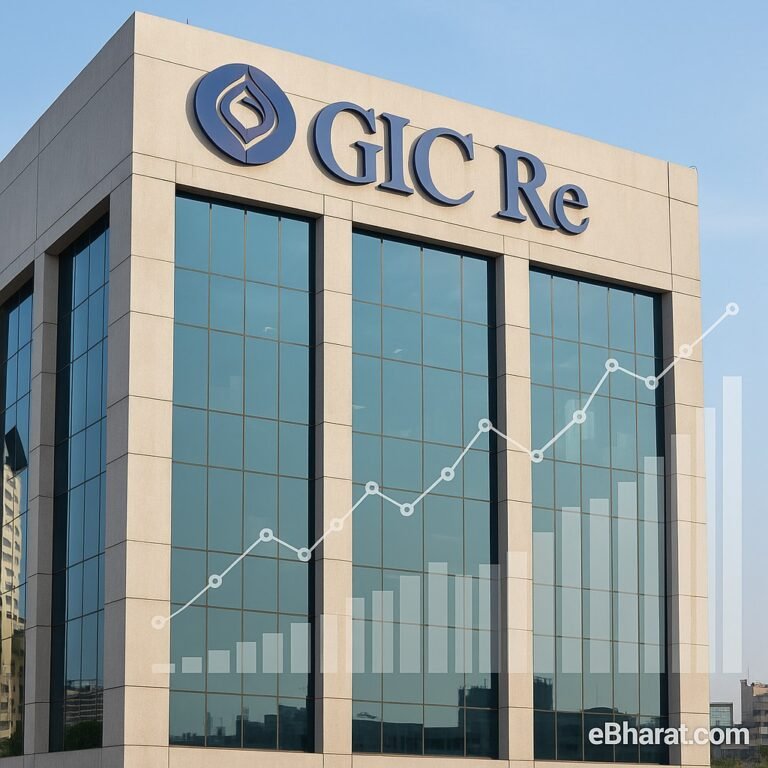
Introduction
Most people are familiar with insurance, and some may have heard of reinsurance. But did you know that even reinsurers need to share their risks? This process is called retrocession, and it is an essential safety net within the global insurance ecosystem. In India, where risks from natural disasters, health, and infrastructure projects are rising, retrocession ensures that reinsurers like GIC Re remain financially stable.
What is Retrocession?
- Definition: Retrocession is when a reinsurer passes on part of its risk to another reinsurer, called a retrocessionaire.
- In simple terms:
- Policyholder → Insurance company → Reinsurer → Retrocessionaire.
- Purpose: To spread risks even further and protect reinsurers from catastrophic losses.
Want to Understand Reinsurance Better?
Retrocession is just one part of the bigger reinsurance picture. Dive into our complete guide on reinsurance in India — its types, importance, and how it shapes the insurance industry.
Read the Full Reinsurance GuideWhy Do Reinsurers Need Retrocession?
- Diversification of Risk
Just like insurers don’t keep all risks, reinsurers too diversify. Retrocession allows them to balance portfolios across geographies and product lines. - Catastrophe Protection
Events like earthquakes, floods, or global pandemics create massive claims. Retrocession spreads this burden across global players. - Capital Relief
By transferring part of the risk, reinsurers can free up capital. This helps them take on more business without overstretching. - Market Stability
Retrocession ensures that no single reinsurer collapses under extraordinary losses, thereby protecting the entire insurance chain.
Example of Retrocession in Practice
Imagine GIC Re has accepted reinsurance for multiple cyclone and flood risks across India. If a super-cyclone hits, the claims could be enormous. To protect itself, GIC Re transfers a part of this exposure to a Swiss reinsurer (retrocessionaire). This way, the loss is shared and financial shock is reduced.
Retrocession vs Reinsurance – Key Difference
| Aspect | Reinsurance | Retrocession |
|---|---|---|
| Who transfers risk? | Insurance company | Reinsurer |
| Who accepts risk? | Reinsurer | Retrocessionaire |
| Purpose | Protect insurers | Protect reinsurers |
| Benefit | Stability for policyholders & insurers | Stability for reinsurance market |
Retrocession Market in India
- India’s reinsurance sector is dominated by GIC Re, but foreign players like Munich Re, Swiss Re, and Hannover Re also participate in retrocession deals.
- With climate change and catastrophic events increasing, Indian reinsurers are expected to expand retrocession partnerships globally.
- Retrocession also allows Indian companies to benefit from advanced risk models developed abroad.
Challenges in Retrocession
- Complex Contracts: Multiple layers of reinsurance and retrocession can complicate claim settlements.
- Costly Premiums: Retrocession is expensive, especially in catastrophe-prone regions.
- Global Dependencies: Heavy reliance on international retrocessionaires may expose Indian reinsurers to foreign market volatility.
Future of Retrocession in India
- Climate-linked Catastrophes: More cyclones, floods, and health crises will drive demand for retrocession.
- IRDAI Regulations: Policies encouraging global tie-ups are likely to expand the retrocession market.
- Technology: AI-driven catastrophe models will help reinsurers decide how much to cede.
- Capital Management: Retrocession will remain a tool for freeing up capital to underwrite more business in India.
Why It Matters to You
Retrocession may sound far removed from the everyday policyholder, but it indirectly protects you. A strong retrocession system ensures that your insurer and reinsurer have the capacity to pay claims — even in large-scale disasters.
Retrocession is the insurance of reinsurers — an invisible but critical part of the financial chain that protects insurers, reinsurers, and ultimately, policyholders. In India, as risks rise and markets open, retrocession will play an increasingly important role in ensuring the stability of the insurance ecosystem.
Secure Your Career in Insurance
As India’s insurance market expands, backed by strong reinsurance and retrocession support, opportunities for agents are booming.
Apply Now to Join Our Agent Network












